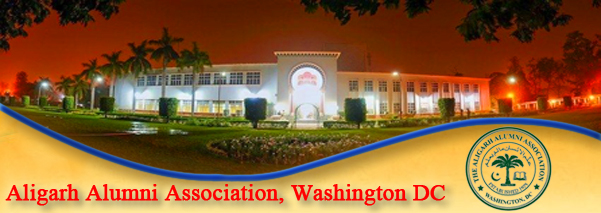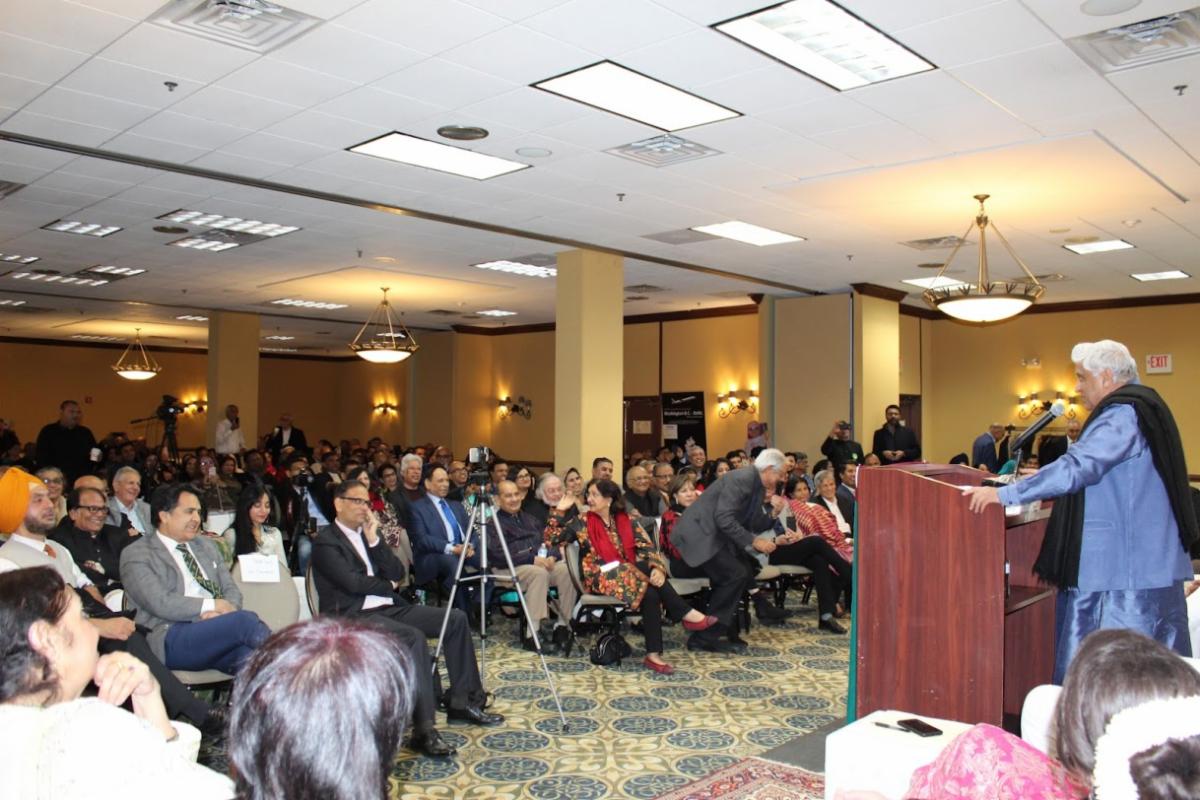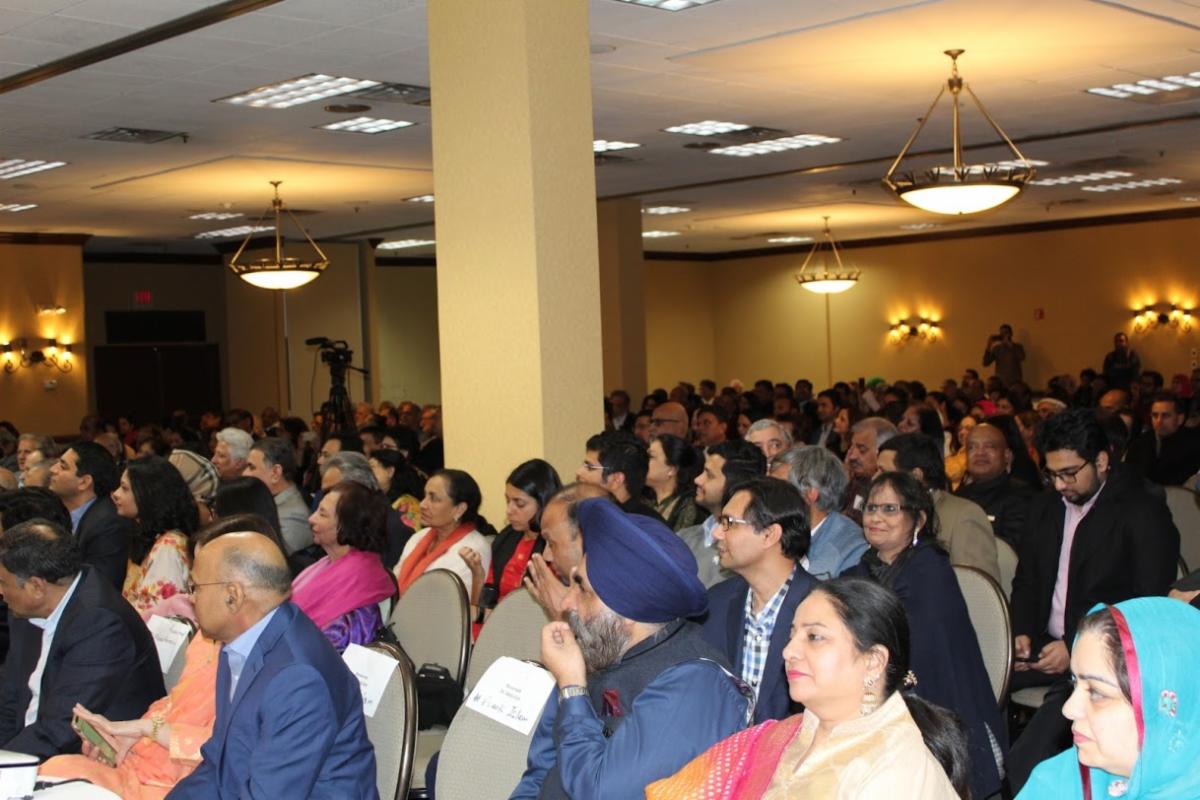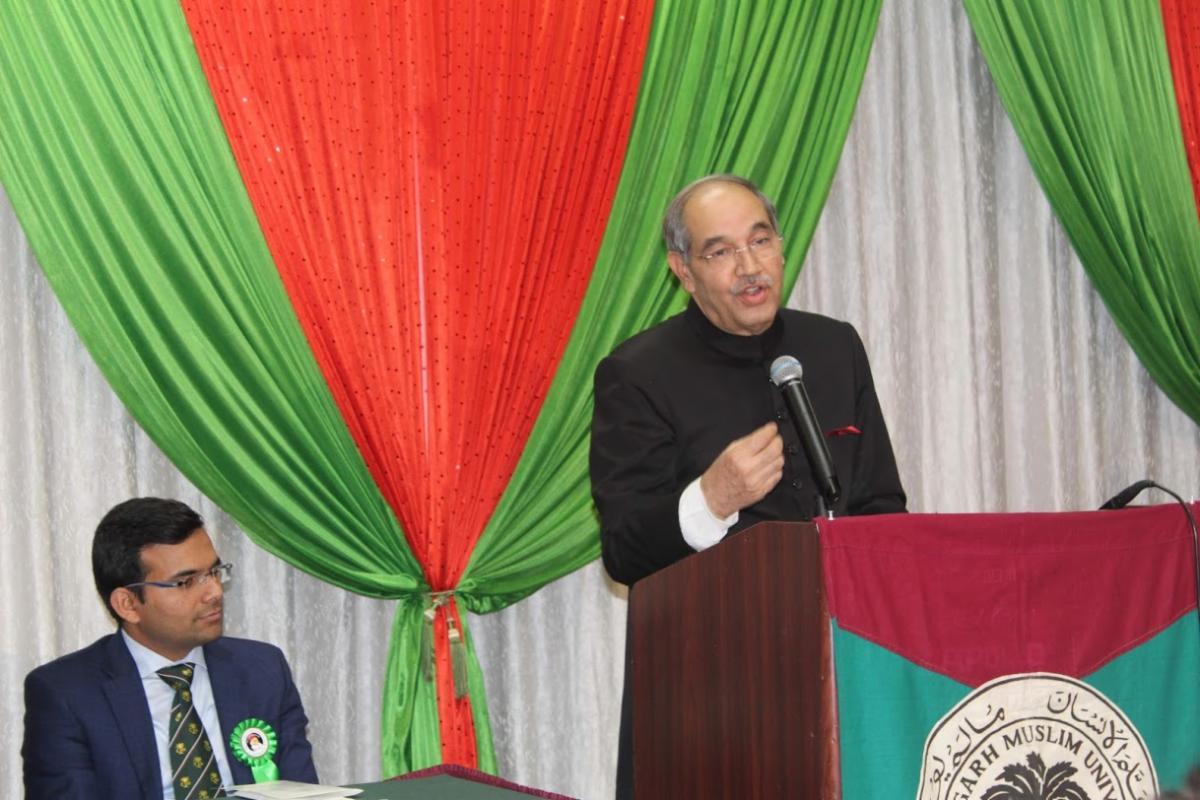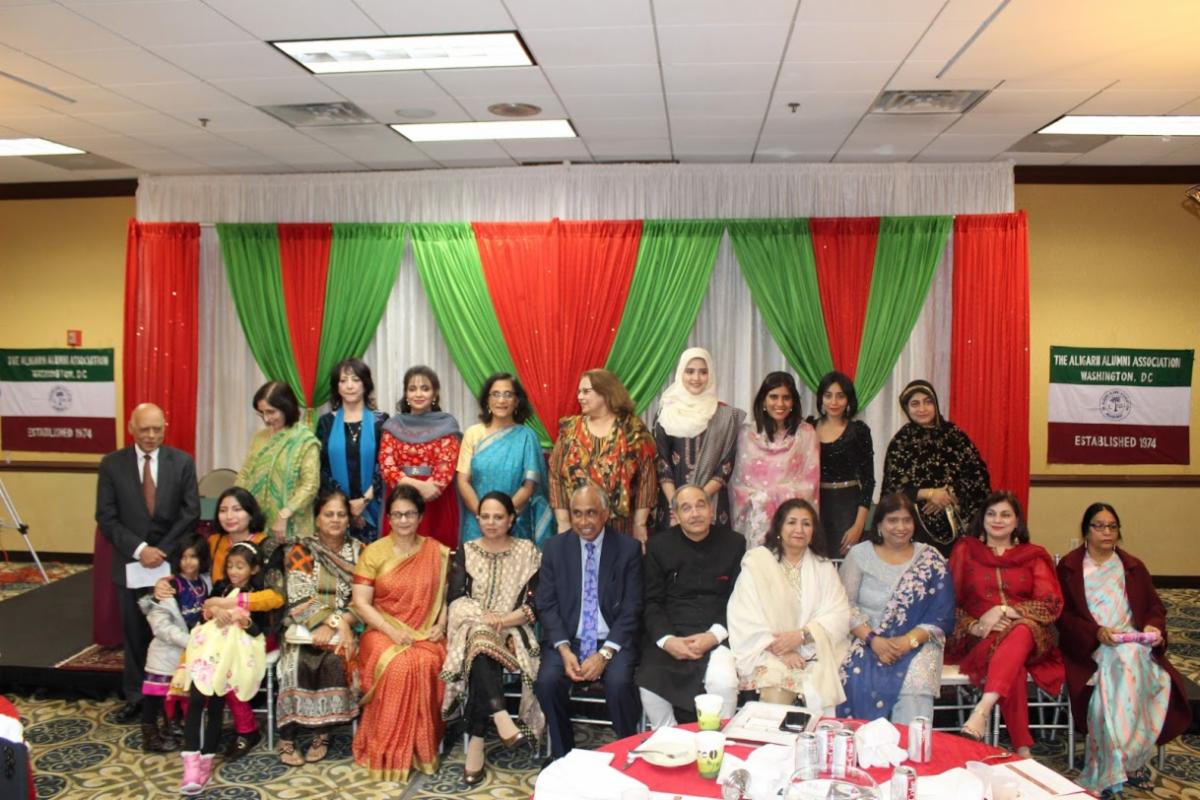|
Trustees: Mohammad Rashid (Chair), Aisha Khan, Abdullah Abdullah, Fazal Khan, Masood Farshori
Exec.Council: Razi Raziuddin (President), Wazir Qadri (Treasurer), Mohsin Khan (Secretary)
|
|
NEWS FROM AROUND WASHINGTON AREA
|
|
The Annual International Mushaira: The long-anticipated function of the Aligarh Alumni Association, Washington, DC (AAA-DC), was held on Saturday, November 16, 2019, at the Radisson Hotel, Rockville, Maryland. This year’s literary event was dedicated to the memory of the celebrated poet, late Kaifi Azmi, whose birth centennial fell this year. The galaxy of prominent participating poets from both this country and abroad, made the event especially attractive, drawing an unusually large audience. Mr. Javed Akhtar and Aalok Srivastava came from India, while Ms. Ambareen Ambar came from Pakistan. Javed Akhtar has been a frequent presence at the AAA-DC Mushairas and is always very popular, but this time the other two poets also drew much applause. Shrivastave especially enthralled the audience with his brand of humorous poetry. The talent pool on the stage was enriched by the presence of well-recognized national poets, Sabiha Saba, Humaira Rehman, Parvin Shere, Qaiser Abbas, Mohammad Jaweed, Abdullah Abdullah and Razi Raziuddin.
Mr. Afzal Usmani served as the emcee for the evening, while Dr. Razi Raziuddin, the current president, welcomed the guests and poets. Professor Tariq Mansoor, vice chancellor, Aligarh Muslim University (AMU), was the chief guest and had travelled from Aligarh specially to attend the festivities. In his brief remarks, he enlightened the audience on the steady progress the University had achieved in various academic fields in recent years.
Since the Mushaira honored the birth centenary of the late Kaifi Azmi, the opening event was a brief session in which Ms. Ambar addressed questions about his life and legacy to Javed Akhtar. His responses were scholarly, informative and entertaining, enlivened with some anecdotes based on his first-hand knowledge of the iconic poet. At the end Javed Akhtar recited his popular poem written on the death of Kaifi Azmi, “Ajeeb aadami tha who.” The responsibilities for conducted the Mushaira and introducing the poets were then shifted to Dr. Abdullah Abdullah, who has over the years polished and mastered the art of piloting these literary gatherings with great dexterity. His introductions of individual poets showcased a delightful fusion of wit and knowledge. The traditional midnight supper for poets and volunteers was hosted by Dr. and Mrs. Mohammad Akbar at their house.
Sir Syed Day Lecture and Dinner: Every year, theAAA-DC hosts the Sir Syed Day lecture and dinner to honor the historic contributions of the founder of AMU to lifting the morale of Indian Muslims and pushing them to acquire modern, secular education in order to succeed in the new order unfolding at the time. The Association invites a prominent scholar from the realm of academia, journalism or politics to talk about some aspects of Sir Syed’s mission as applicable today. This year, Professor Tariq Mansoor was the invited keynote speaker. He is an academician, a medical practitioner and had served as the principal, Jawaharlal Medical College and Hospital at AMU, before taking over as the vice chancellor.
Ordinarily, the event does not attract a large gathering, but this year it was different, as many more people attended than in the past. Professor Mansoor was introduced by Mr. Suhail Farooqui, a local entrepreneur and community activist. Dr. Mohsin Khan, secretary AAA-DC, acted as the compere for the evening. In his address, Professor Mansoor recounted the current status of various academic programs and laid out his vision of the future. He expressed pleasure at the ranking assigned to AMU by the national and international agencies that placed it among the top tier of national institutions. He revealed that the University had added a new hall of residence for women to encourage their admissions and named it after Sir Syed’s mother, Begum Azizun Nissa.
The session concluded on a vote of thanks by Dr. Frank Islam, a well-recognized philanthropist and businessman. (Dr. Mohsin Khan contributed to the report).
The success of the programs hosted by the AAA-DC this year was made possible by tireless efforts of the numerous volunteers who worked behind the scene, without seeking or expecting any recognition.
|
|
The Passing of Mrs. Shaukat Kaifi
The AAA-DC notes with sadness the passing of Mrs. Shaukat Kaifi in Mumbai on November 22, 2019, at the age of 91. Born in the former princely state of Hyderabad, she was an Indian film and theater artist and acted in some famous movies, like Garm Hava, Umraaon Jaan and Bazaar. Shaukat Kaifi and her husband, the late Mr. Kaifi Azmi, a famous Urdu poet and film lyricist, are survived by two children, Baba Azmi, a noted cinematographer and Shabana Azmi, a famed Bollywood screen actress and activist.
Kaifi Azmi and Shaukat Kaifi were icons of the Indian People’s Theater and Progressive Writers Associations, which once served as the cultural platforms of the Communist Party of India. Both had participated in the AAA-DC Mushaira in 1988 and then later in Jashn-e-Kaifi in 1992. We pray for God’s infinite blessings on the departed soul.
|
Some reminisces of My School Days
(Editor’s Note: I invite all members of the AAA-DC to write about their experiences at AMU or any other institution they attended. Following is my story.)
For four generations, my ancestors, including my father, had been practitioners of Unani medicine (Hakeems). My father greatly desired for the family tradition to continue, and was hoping that the AMU medical college would start functioning by the time I graduated from college. Alas, it was not to be.
Since the upheaval following the partition of the country, made the dream of the medical school at Aligarh a mirage, my father decided that science would be a good path for me to follow. However, the only high school in my small hometown, Sahaswan, Badaun, did not offer science courses, he decided to send me to the Aligarh Muslim University School. Thus, I arrived at Aligarh (Minto Circle) in 1948, and was admitted to the 9th grade at Aligarh University School (Minto Circle)
I found my new school different in many respects from my hometown high school. It had its own culture and traditions, was somewhat insular, and prided itself on being an elite institution. Its striking feature was its outwardly physical appearance. Unlike my hometown school, which stood in an open green field, the Minto Circle was like a medieval citadel, surrounded by high walls, housing an academic as well as a residential establishment. Its doors were locked at sunset, and the only admittance then was through a small window, guarded by a night watchman. Anybody left on the outside at night had to show a permit issued by the warden to get in. Returning late at night often brought a summon the following day to warden’s office. The school guarded the safety of its wards, all young boys, very diligently.
In the winter, its high walls did not permit much sunshine in the courtyard, but the campus was leafy and cool in the summer. Another feature of the school was its demographics, almost all students and teachers were Muslims, in contrast to my previous school where nearly half the students and faculty were Hindus. Most of our teachers had houses just outside the school walls in Aligarh. However, one intrepid teacher, I remember, Master Asghar Ali Saheb, lived in the old city, and walked daily, some three or four miles each way. And, remarkably, he was never late to his class, often first thing in the morning. He taught us Urdu poetry and I loved his classes.
Most of my class fellow, who lived in the hostel within the school walls, were sons of wealthy landlords, while a significant number came from South Africa, sent by their Indian immigrant parents who wanted them to be exposed to their cultural and religious heritage. They spoke fluent English, with a quaint accent, wore expensive clothes and interacted within their group. All this unfamiliar, new environment intimidated me, a young boy in early teens, who had never been away from home for any length of time. Initially, I found it very hard to adjust and make friends and felt like an outsider, having come from a very different social milieu.
I felt home sick and asked permission from my father to return home, falsely claiming that I was unable to deal with the science courses. My father acquiesced and I returned home to an unwelcome environment and felt like a retreating soldier from a defeated army. I went back to Aligarh in just four days. This time, I worked hard to adjust and learn my chemistry, biology and physics.
My teachers at my former school in Sahaswan had given me some good quality education. In the half-yearly examinations at the AMU School, I did so well that it surprised my teachers and class fellow who started taking a little more notice of me. I was selected the editor of the school magazine, based on an open written competition. And, I passed my high school in the first division. By the time I finished two years later, I had developed an abiding affection for my school and felt sad at leaving it and the friends I had made. Alas, in half a century, I have never been back
Syed Amir (Editor) Khurshid Usmani (Web)
Razi Raziuddin (President) Mohammad Rashid (Chairperson)
|
|
Amazon.com donate to AAA each time you shop. Click on the right to donate.
|
|
|
|
PO Box 1877, Ellicot City MD 21403
|
 |
|
|
|

 Aligarh Alumni Association
PO Box 1877, Ellicott City MD 21041
Aligarh Alumni Association
PO Box 1877, Ellicott City MD 21041